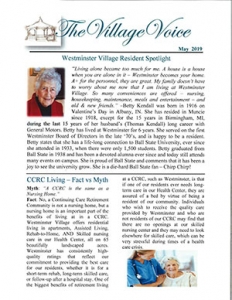Chaplain’s Corner: CXVIII
“Seek the Truth”
Like most kids, I grew up hearing Christopher Columbus was the man who bravely stood up to the religious superstitions of the Dark Middle Ages. Ignorant people-deceived by Catholic priests-were certain the world was flat. If you sailed to the edge of the Earth, your ship would plunge into the abyss. Thus the Church’s most esteemed prelates opposed Columbus’ plan to sail west across the Atlantic in search of India and the Far East, for the common-sense reason that every sailor in such an expedition would be lost.
Columbus, however, felt certain that the Earth was round. And he proved it by ignoring his culture’s prevailing myths, choosing instead to be guided by the brighter lights of science and intellectual curiosity.
Therefore his name has bestowed on two U.S. capitals, our nation’s federal governmental district (D.C.), a nation in South America, the westernmost province of Canada, and even the second Monday in October, compelling banks and post offices to close their doors to commemorate the guy who stumbled upon the New World. That’s how the story is told. But it turns out to be complete rubbish.
To start with, Columbus had no need to “prove” that the earth was round. The sphericity of our planet had been affirmed by the ancient Greeks at least 300 years before Christ. No one seriously doubted it, including major theologians like Augustine and Aquinas. Columbus appealed for the financial support of Ferdinand and Isabella, the Spanish monarchial couple.
That’s not to deny that a few people still clung to the notion that the earth was flat. A few people still believe that today.
Columbus had no quarrel with the church. He himself was a faithful Catholic and was confident that his voyages glorified God. He did misrepresent the distance from Spain to Japan by sailing west. Columbus, using fuzzy math guessed it was about 3,000 miles. It was more than 15,000 miles. But that point turned out to be moot, since his progress was impeded by a hemisphere he never anticipated.
So how did Columbus morph into a modern pro-science hero who stood up against the embarrassing ignorance of close-minded priests?
The “Flat Earth Error” was kick started by American author Washington Irving (1783-1859). The man who invented Rip Van Winkle and The Legend of Sleepy Hollow was devoted to the Enlightenment notion of progress-that history, properly understood, would show a steady climb from the foggy depths of mythology to the clear mountain heights of rational thinking. A number of progressive historians followed suit.
Once we get certain ideas into our heads-perhaps at an early age-it’s hard to shake them. That might include the way your Mom loaded the dishwasher. The counsel that you should always buy a used car instead of a new one. And the assurance that you can only trust one side of the political spectrum. And not-really-truisms like, “God helps those who help themselves.”
What can we do to keep ourselves from defaulting to worn-out ideas, discredited notions, and less than perfect ways of seeing the world? Study. Read. Ask questions. Challenge your own convictions. Take a deep dive into Scripture. Seek new insights. Talk to God.
“If any of you lacks wisdom, you should ask God, who gives generously to all without finding fault, and it will be given to you” (James 1:5)
This we know for sure: Christopher Columbus, despite all the concerns associated with his voyage, was an exceedingly brave person. And we can be sure that the God of all truth will always honor the bravery of the one who seeks the truth-and is willing to follow the clues wherever they lead.
Faithfully,
Ron Naylor, Chaplain




